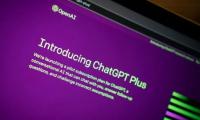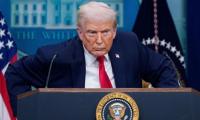Inside the Red Zone: Digital dreams for a divided electorate
The president of Pakistan’s announcement that elections in Punjab will be held on April 30 means political parties will swing into campaign mode without much delay. Khyber Pakhtunkhwa polls are also in the offing and general elections are due a few months down the road. Election season, it seems, is upon us.
No wonder, all stakeholders have started dreaming digital dreams.
At the heart and core of these dreams lies the voracious appetite to connect to the heart and core of every citizen who owns a mobile phone and has an internet connection. Such an appetite has built up over the last few years in direct proportion to the success of those outfits who have been able to leverage the power of these digital dreams and transform them into reality. The term ‘keyboard warriors’ once elicited condescension – today it commands respect. And money.
In fact, money is now pouring into the digital domain like never before. Political parties and media organizations – two primary stakeholders among a long line of players – are diverting resources from other areas to ensure their digital muscles are well and truly flexed before the campaign juggernauts hit the road. These new priorities are finally aligning with new policies in a bid to penetrate deeper into the electorate as it prepares to mull over its verdict.
But things are not that simple.
It starts with figuring out what constitutes the digital mesh that is superimposed on the political and media landscape. There are three broad categories at play: (1) personal social media accounts that generate political and informational content; (2) official organizational and party social media accounts that share content which is directly ascribable to the brand; and (3) formal digital arms (websites, video platforms) of mainstream media organizations that leverage content from the primary platform (newspaper/TV) and distribute digitally with reformatting, if necessary.
These three distinct categories combined have acquired an audience reach that is challenging the domination of traditional platforms, and oftentimes surpassing them. In terms of electioneering and voter outreach, all stakeholders agree the digital highway is the fastest route to success. There are many reasons for this, but a key one is the ability of the digital platforms to connect to the individual via his/her personal feeds. The definitional strength of mass media is fast becoming its weakness. Who wants to consume generic ‘mass’ content when he or she can have it tailored to personal tastes and preferences?
Understanding and acknowledging this changed reality is the easy part. The more challenging one, however, is twofold: one, how to create content that triggers or influences political preferences; and two, how to enhance the reach of the digital arms so that this content reaches the target audience. Overcoming these challenges is a work in motion in today’s Pakistan but with the election season dawning after Eid, there may not be too much time at hand for stakeholders to bring themselves up to speed in terms of fully harnessing their digital dreams.
Here’s why.
For the political parties, the real challenge is how to utilize social and digital media to influence those voters who lie beyond their core support base. It is far easier to criticize and troll your opponents than to convince their voters to switch preferences. The power to persuade is more difficult to attain than the power to abuse. The task becomes even more difficult when political polarization is as acute as it is today in Pakistan. Crude use of social media to attack the opponent can galvanize the party’s existing support base but it may not translate very effectively to enlarging that base.
Flip this scenario and a similar difficulty rears its head. Crude projection of the party and its leaders has a problem: it may make the leaders believe their teams are doing a great job of promotion, but it does little to appeal to the sceptical audience. Bringing about behavioural change in people through digital messaging is a science few have mastered in Pakistan.
This is increasingly why money is being thrown at digital teams to increase the number of keyboard warriors and their new keyboards; and this is why money is also being thrown at the standard array of copywriters, graphic designers, video editors and influencers – all the while refusing to accept the fact that message is far more important than the medium. This obvious weakness will become apparent once digital campaigns go into higher gear in the coming weeks.
Traditional media organizations also have their work cut out for them as election season draws near. Newspaper and news channel editors and executives know full well that standard election coverage will not draw audiences in when digital media provides greater speed, variety, individuality and personal participation.
Passive consumption of content – the kind that traditional media platforms provide – is a trend that is weakening by the day. Faced with this realization, most media organizations are adopting the convenient route to materialize their digital dreams: they are taking their conventional content and dumping it onto their digital platforms. This works to an extent – live TV transmission of YouTube has impressive numbers – but it misses the point that native digital content is what finds most traction.
Blanket live coverage of electoral activities during peak campaign season used to attract big audiences for news channels in the past. Most media organizations may therefore fall into the trap of dusting off their previous election coverage plans and putting them into practice with some tinkering and updating. This won’t work. Digital media is faster, wider and always has better footage. There is of course the crucial element of verification that mainstream media brings to the table, but in the deluge of content this factor alone may not be able to hold its own. It is an unfortunate reality, but a reality all the same.
The other safer route for news channels will be to organize marathon transmissions. Analysis and opinion sell – and will continue to do so. But in the fast-moving environment of the electoral campaign, slow moving transmissions run the risk of losing audience.
Smart editors will therefore need to focus on producing native digital content. Such content takes into account the specific consumption patterns of users on specific social media platforms. This would require editors to detach themselves from their primary content production habits and re-imagine storytelling and production for the digital platforms. Agreeing to do this is far easier than actually getting it done. More so when the timelines are as tight as the one that looms ahead.
In the end, however, there may be little choice for all political and media stakeholders. Digital dreaming will need to transform into digital outcomes that attract and influence voters and audiences at a time when the stakes for Pakistan could not be higher.
Hear that? That’s the sound of the alarm clock ringing. Time to wake up.
The writer is the special assistant to the prime minister on public policy and strategic communication. He tweets @fahdhusain
-
 Rachel McAdams Becomes Object Of Jokes At Hollywood Star Of Fame Event
Rachel McAdams Becomes Object Of Jokes At Hollywood Star Of Fame Event -
 South Korea's Ex-PM Han Duck-soo Jailed For 23 Years Over Martial Law Crises
South Korea's Ex-PM Han Duck-soo Jailed For 23 Years Over Martial Law Crises -
 Global Markets On Edge Over Greenland Dispute: Is US Economic Leadership At Risk?
Global Markets On Edge Over Greenland Dispute: Is US Economic Leadership At Risk? -
 King, Queen Visit Deadly Train Crash Site
King, Queen Visit Deadly Train Crash Site -
 Oxford Research Warns ChatGPT Reflects Western Worldviews
Oxford Research Warns ChatGPT Reflects Western Worldviews -
 UK Inflation Unexpectedly Rises To 3.4% In December, The First Increase In Five Months
UK Inflation Unexpectedly Rises To 3.4% In December, The First Increase In Five Months -
 Meghan Markle Set To Take Big Decision On Returning To UK For Invictus Games
Meghan Markle Set To Take Big Decision On Returning To UK For Invictus Games -
 Prince Harry To Leave Britain One Day Earlier Than Expected For THIS Reason
Prince Harry To Leave Britain One Day Earlier Than Expected For THIS Reason -
 The Way You Consume Sugar Could Be Affecting Your Health
The Way You Consume Sugar Could Be Affecting Your Health -
 Brooklyn Beckham Gets Backing From Vanessa Marcil Amid Feud With Parents
Brooklyn Beckham Gets Backing From Vanessa Marcil Amid Feud With Parents -
 OpenAI Uses AI To Detect Under 18 Users On ChatGPT
OpenAI Uses AI To Detect Under 18 Users On ChatGPT -
 Philippines To Lift Ban On Grok AI After Musk's Platform Commits To Fix Safety Concerns
Philippines To Lift Ban On Grok AI After Musk's Platform Commits To Fix Safety Concerns -
 Trump Vows ‘no Going Back’ On Greenland Ahead Of Davos Visit
Trump Vows ‘no Going Back’ On Greenland Ahead Of Davos Visit -
 Alexander Skarsgard Breaks Silence On Rumors He Is Bisexual
Alexander Skarsgard Breaks Silence On Rumors He Is Bisexual -
 King Charles Faces Rift With Prince William Over Prince Harry’s Invictus Games
King Charles Faces Rift With Prince William Over Prince Harry’s Invictus Games -
 Elon Musk’s Critique On ChatGPT Safety Draws Sharp Response From Sam Altman
Elon Musk’s Critique On ChatGPT Safety Draws Sharp Response From Sam Altman



